Neuromuscular Disorders
What is Neuromuscular disorders?
Neuromuscular disorders affect the nerves that control voluntary muscles and the nerves that communicate sensory information back to the brain. Nerve cells (neurons) send and receive electrical messages to and from the body to help control voluntary muscles. When the neurons become unhealthy or die, communication between the nervous system and muscles breaks down. As a result, muscles weaken and waste away (atrophy).
What are the symptoms of Neuromuscular disorders?
There are many neuromuscular disorders, and treatment by an experienced multidisciplinary team, such as the one at Cedars-Sinai's Neuromuscular Disorders Program, is vital.
These disorders result in muscle weakness and fatigue that progress over time. Some neuromuscular disorders have symptoms that begin in infancy, while others may appear in childhood or even adulthood. Symptoms will depend on the type of neuromuscular disorder and the areas of the body that are affected.
Some symptoms common to neuromuscular disorders include:
- Muscle weakness that can lead to twitching, cramps, aches and pains
- Muscle loss
- Movement issues
- Balance problems
- Numbness, tingling or painful sensations
- Droopy eyelids
- Double vision
- Trouble swallowing
- Trouble breathing
Types of neuromuscular disorders include:
- Amyotrophic lateral sclerosis (ALS)
- Charcot-Marie-Tooth disease
- Multiple sclerosis
- Muscular dystrophy
- Myasthenia gravis
- Myopathy
- Myositis, including polymyositis and dermatomyositis
- Peripheral neuropathy
- Spinal muscular atrophy
What causes Neuromuscular disorders?
Neuromuscular disorders can be inherited or caused by a spontaneous gene mutation; some also may be caused by immune system disorders.
How is Neuromuscular disorders?
A physician will examine the patient and take a medical and family history. Checking a patient’s reflexes and muscle strength, as well as evaluating other symptoms, may lead a physician to order other diagnostic tests, including:
- Blood test to check for elevated enzymes
- Magnetic resonance imaging (MRI) scan of the brain and spinal cord
- Lumbar puncture (spinal tap) to check cerebrospinal fluid
- Electromyography (EMG) to record the electrical activity of each muscle
- Nerve conduction studies to see how well signals travel from nerve to muscle
- Muscle biopsy to examine a sample of muscle tissue under a microscope
- Genetic testing to confirm gene mutations
How is Neuromuscular disorders treated?
Currently there is no cure for neuromuscular disorders. Research is being done on genetic therapies and new medications in hopes of finding a cure.
Treating symptoms, delaying disease progression and enhancing quality of life for patients is accomplished with medications, physical therapy, occupational therapy and, when necessary, surgery.

